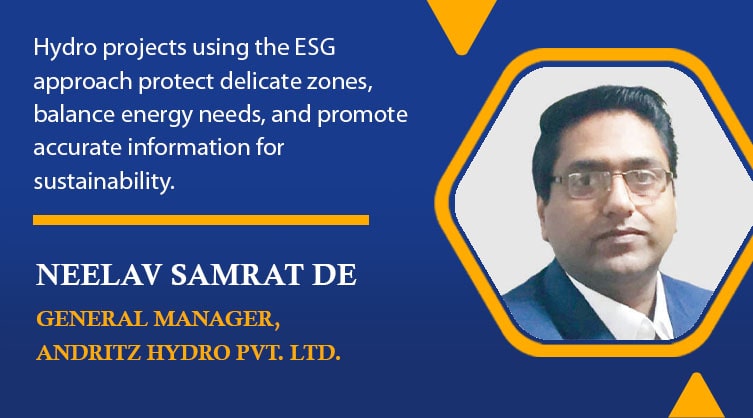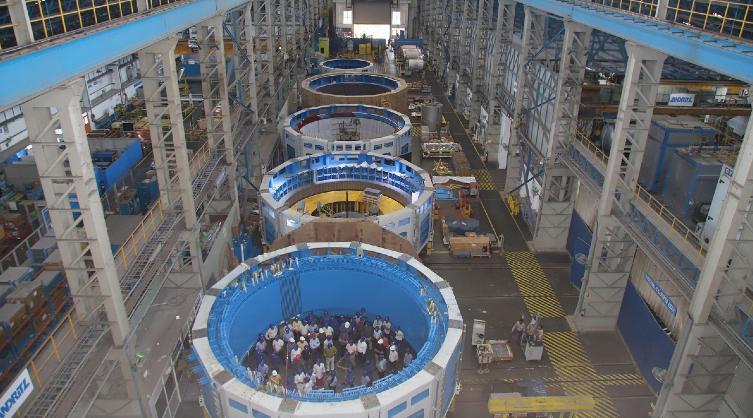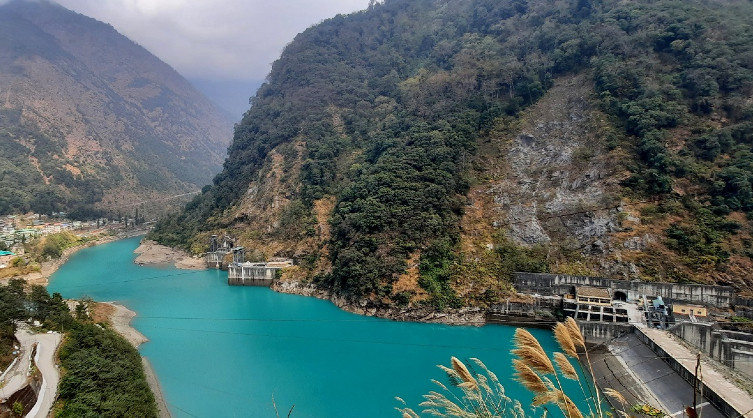Hydroelectric projects can create harmony between energy and ecology
By EPR Magazine Editorial August 25, 2023 11:41 am IST
By EPR Magazine Editorial August 25, 2023 11:41 am IST

In an interview with EPR Magazine, Neelav Samrat De, General Manager of Andritz Hydro Pvt. Ltd., talks about India’s hydroelectric power potentials and discusses some challenges and solutions.
What are the challenges hindering the growth of hydroelectric projects and the strategies to harness India’s abundant hydroelectric resources?
The potential and prospects of greenfield hydroelectric projects in the Himalayan belt and the northeastern region are promising for sustainable energy development and regional growth. However, to fully realise the benefits, we need to address the associated challenges, especially in critical geographies, eco-sensitive areas, clearance procedures, funding constraints, Resettlement and Rehabilitation (R&R), and land acquisition.
Furthermore, collaborative efforts from stakeholders, governments, and private enterprises are critical to overcome these hurdles and ensure hydroelectric projects’ successful and timely implementation. This will further contribute to both energy security and environmental preservation.

How can India balance meeting its growing energy demands and preserving ecologically sensitive areas impacted by hydropower projects?
Firstly, it is important to address misconceptions regarding the impact of hydropower projects on ecologically sensitive areas. These misconceptions require clarification to dismiss any false notions about hydroelectric projects. Contrary to such claims, hydropower projects do not contribute to flash floods or cloud bursts, nor do they cause any harm to the environment.
Hydroelectric projects can effectively safeguard these ecologically delicate zones by adopting an environmental, social, and governance (ESG) approach during their implementation. With appropriate measures and responsible practices, the development of hydropower projects can successfully strike a harmonious balance between fulfilling energy demands and preserving the integrity of eco-sensitive areas. Promoting accurate information and dispelling unfounded criticisms is crucial to ensure informed decision-making and encourage sustainable energy development.
How are local communities benefiting from hydroelectric developments, and what measures are in place to ensure inclusive growth?
When hydroelectric projects are undertaken, a Local Area Development Fee (LADF) is levied on the developer. The LADF constitutes essential financial support that contributes to corporate social responsibility (CSR) initiatives and sustenance programmes for the local community. Additionally, implementing these projects results in employment opportunities for the local populace. In some instances, surplus revenues generated by the projects are shared with the local communities, further fostering their economic welfare.Moreover, the execution of each hydroelectric project entails the development of critical infrastructure, such as roads, educational institutions, and healthcare facilities, which prove highly advantageous for the local communities.

How does pumped storage technology contribute to grid stability, renewable integration, and energy storage in the power sector?
Pumped storage plants are the most sustainable and long-term solutions for large-scale energy storage. They are a high reactive energy load and provide the much-needed grid stability from intermittent RE power through this characteristic. The capital costs are marginally higher than conventional hydroelectric projects, but they average a 40-year life cycle, thus making them the most reliable energy storage source.
What measures are taken by hydroelectric projects to adapt to changing weather patterns and ensure long-term sustainability in a climate-vulnerable nation like India?
Hydroelectric projects are a very clean and green source of energy and do not impact the environment negatively. However, by being location-specific, they are built in sensitive terrain. Hydro projects do not have any impact on the weather or the environment, so they do not need to adapt to changing weather conditions in India or globally, for that matter.
Disclaimer: The opinions and views mentioned in the article are those of the author only and do not reflect, in any way, those of the organisation.
We use cookies to personalize your experience. By continuing to visit this website you agree to our Terms & Conditions, Privacy Policy and Cookie Policy.